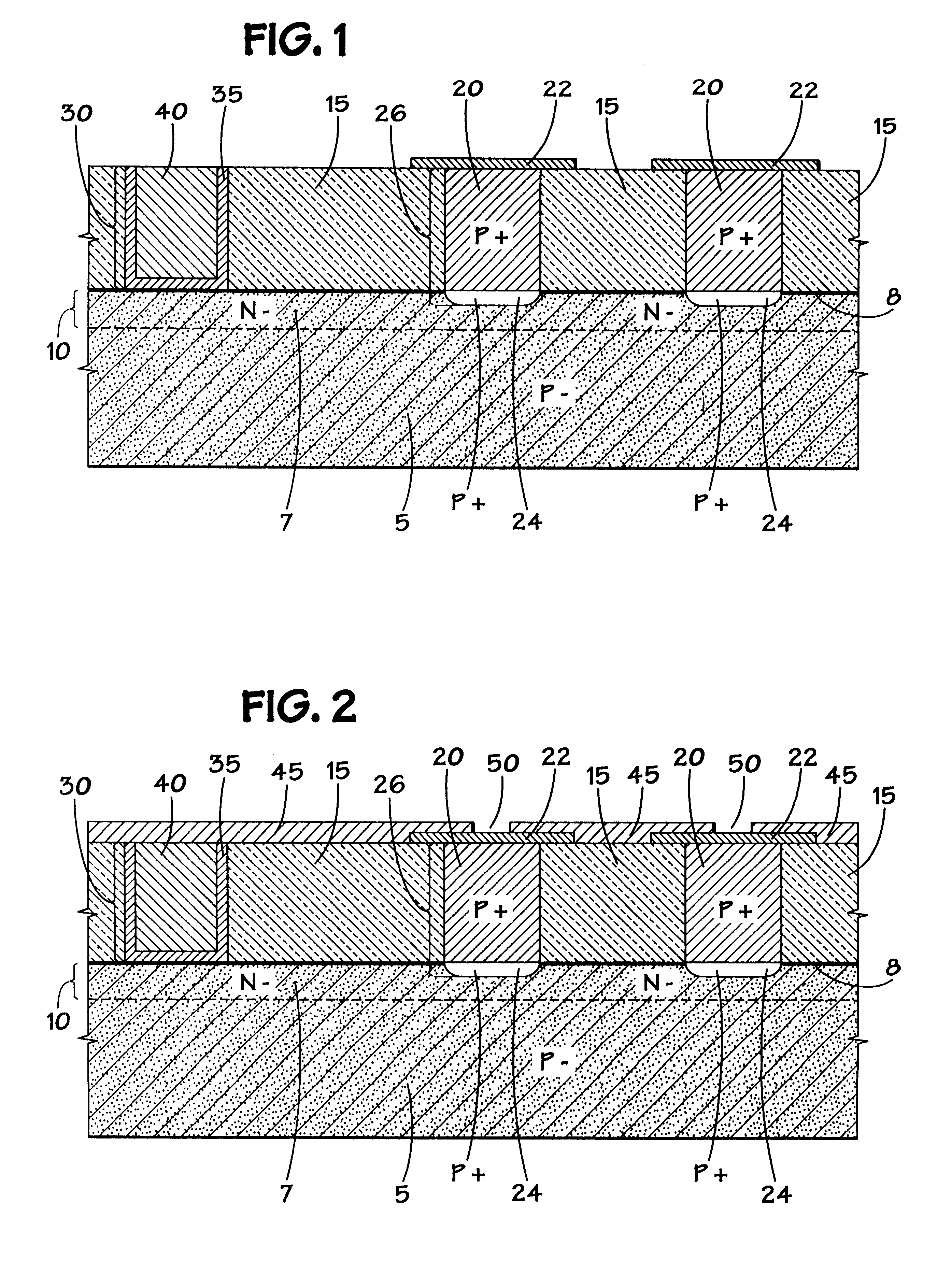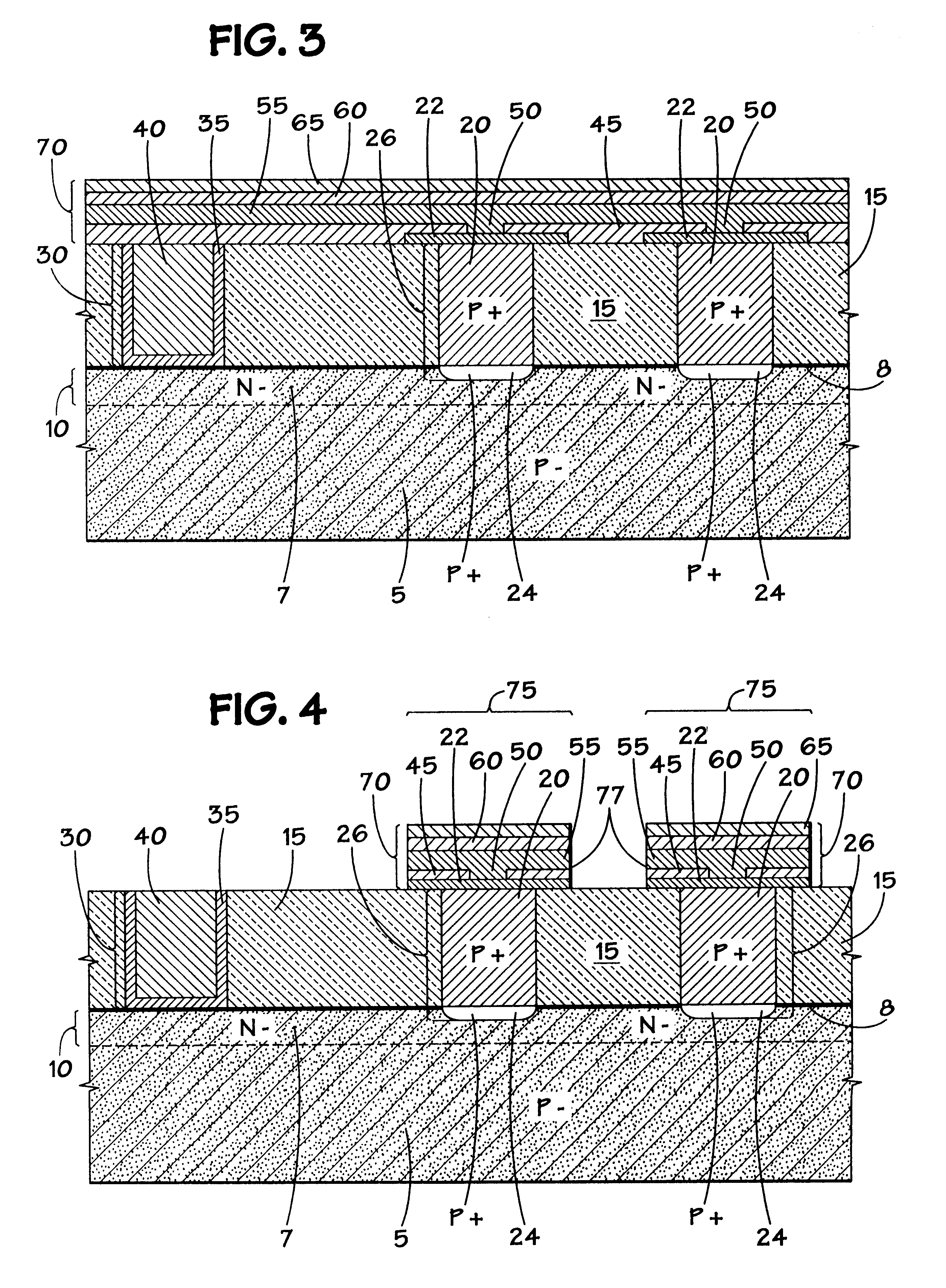Memory cell incorporating a chalcogenide element and method of making same
a memory cell and chalcogenide element technology, applied in semiconductor devices, diodes, electrical apparatuses, etc., can solve the problems of limited number of permissible logic states in such systems, electrical failure, and poor adhesion to silicon nitrid
- Summary
- Abstract
- Description
- Claims
- Application Information
AI Technical Summary
Problems solved by technology
Method used
Image
Examples
Embodiment Construction
Conventional Process
The embodiments are best described by first considering a common process currently practiced in a CMOS context to form a chalcogenide element. FIGS. 1-6 illustrate cross-sectional views of that existing process. FIG. 1 depicts a substrate 5 prior to the formation of the chalcogenide element. As a result of a number of preliminary processing steps, the substrate 5 includes n- doped regions 7 in the active area of the substrate 5, along with an optional layer of titanium silicide 8, that together function as a buried digit line 10. A relatively thick layer of silicon dioxide 15 overlies the buried digit lines 10. The silicon dioxide 15 has been masked with a contact pattern, not shown, and etched to create openings in which polycrystalline silicon plugs 20 are formed. A lower electrode 22, in the form of a layer of electrode material, such as carbon, overlies each plug 20. There are shallow p+ regions 24 extending below the plugs 20 as a result of diffusion of p+ m...
PUM
| Property | Measurement | Unit |
|---|---|---|
| thickness | aaaaa | aaaaa |
| thickness | aaaaa | aaaaa |
| thickness | aaaaa | aaaaa |
Abstract
Description
Claims
Application Information
 Login to View More
Login to View More - R&D
- Intellectual Property
- Life Sciences
- Materials
- Tech Scout
- Unparalleled Data Quality
- Higher Quality Content
- 60% Fewer Hallucinations
Browse by: Latest US Patents, China's latest patents, Technical Efficacy Thesaurus, Application Domain, Technology Topic, Popular Technical Reports.
© 2025 PatSnap. All rights reserved.Legal|Privacy policy|Modern Slavery Act Transparency Statement|Sitemap|About US| Contact US: help@patsnap.com



